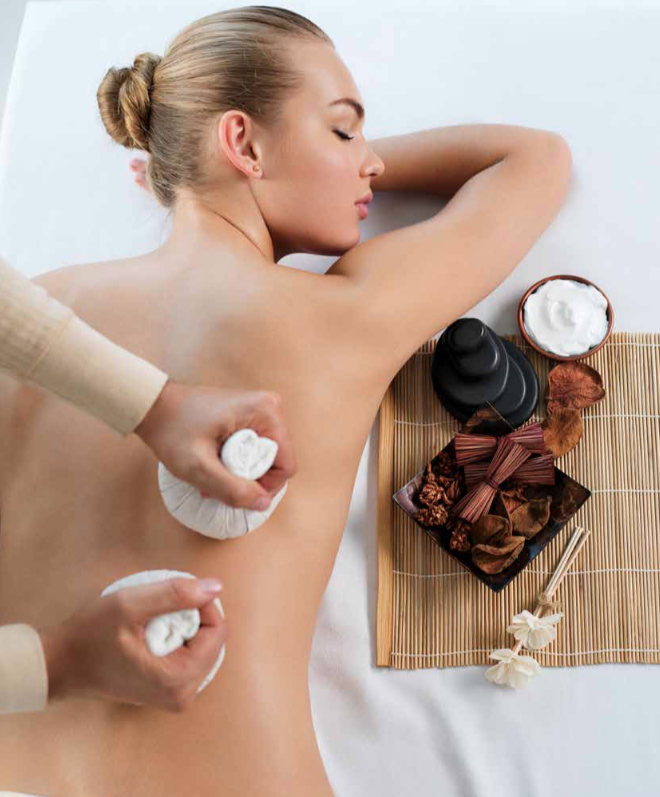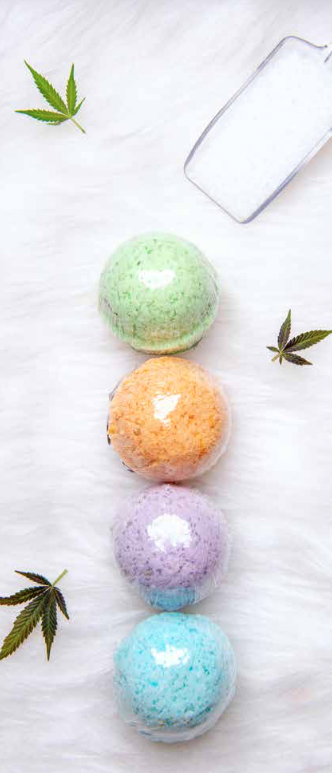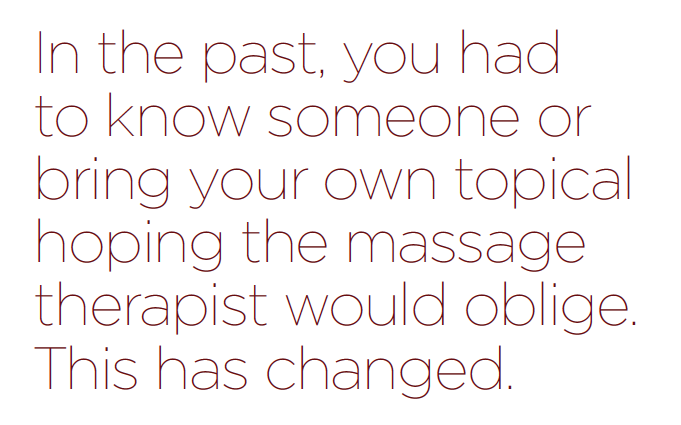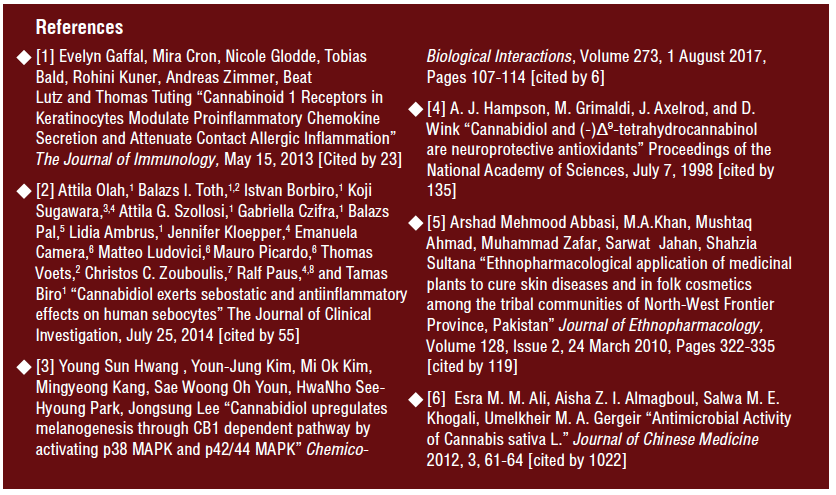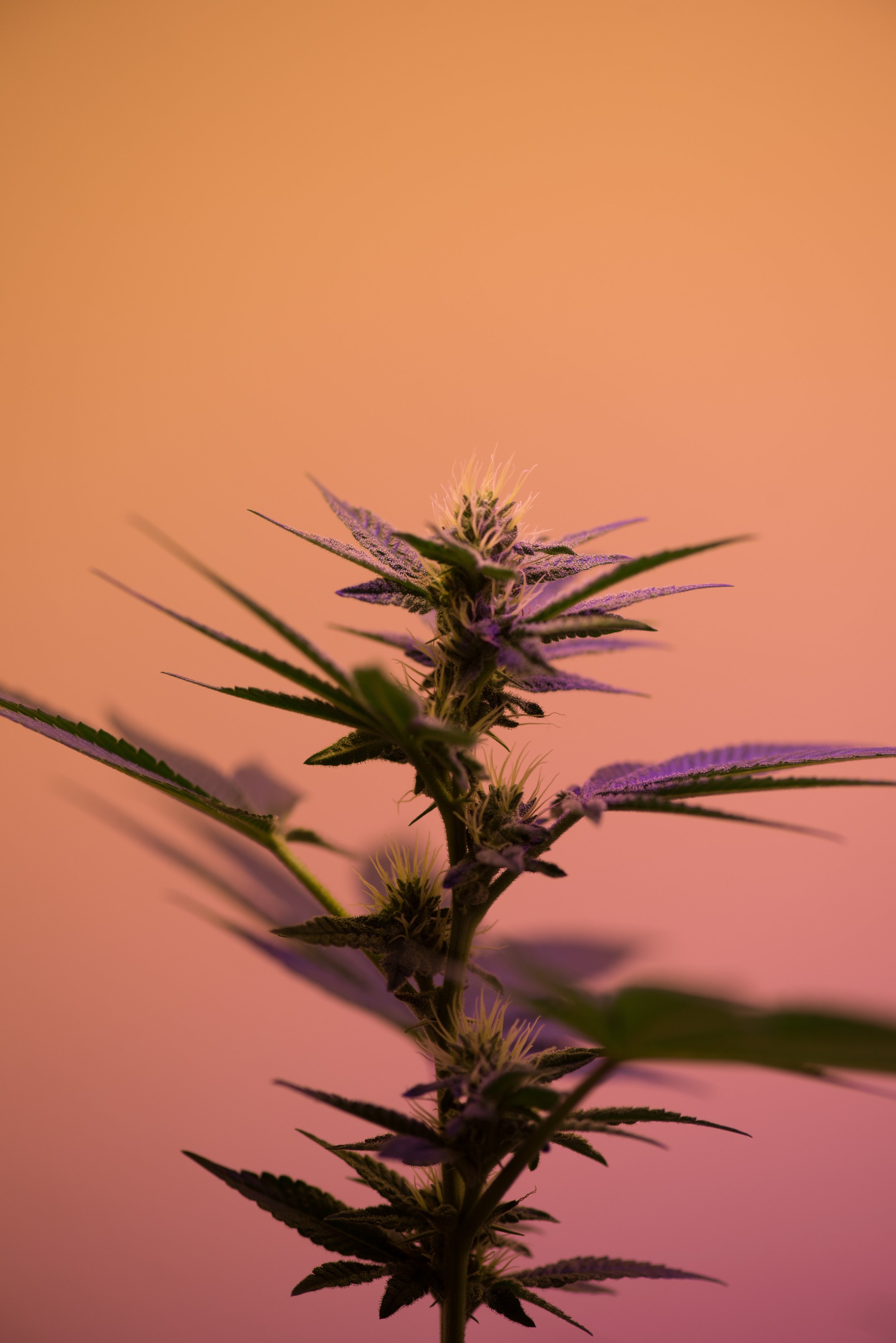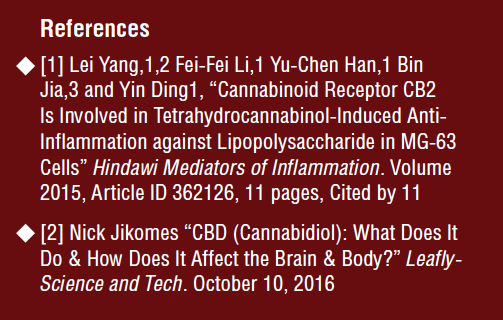An overview of how CBD is quickly influencing the spa and salon industry
By Ella Cressman, LE, Published in Topical Magazine, August 2019
C. B. D. Three little letters that are capturing the attention of Med Spas, Skin Care Studios, Day Spas and Salons across the U.S.. CBD is making its way into pedicures, facial services, massage, and even hair treatments. How does cannabis find its way into the beauty industry? Where will it go from here?
Five years feels like lightyears ago in this niche of the market but was the beginning of the emergence of CBD into mainstream spa and salon services. There was anecdotal, and limited scientific evidence of pain and inflammation relief by using a topical cannabinoid concoction, but there were not readily available products. If you wanted a CBD massage, you had to either (1) know someone who knew someone who knew the secret codeword or (2) bring your homemade topical to your massage therapist and hope they would oblige. Sure, there were cannabis “topicals” being sold at marijuana dispensaries, but they were products intended for pain relief for “patients” holding “medical” cards and were not widely discussed, used, or thought of in a skin care studio, for example. Mainly because most products at the time contained CBD and its scary (fun) cousin, THC, therefore were only available to those who braved their way into a dispensary. When asking “why” and “how” a product worked, you were at the mercy of the education level of the budtender.
In order to understand cannabidiol and how it works in the skin, one had to dive deep into thousands of available published studies. Because CBD communicates with the Endocannabinoid System (ECS) and the ECS communicates with everything, you could imagine how much digging and sorting it took to find studies relating to skin and skin health or other efficacies relating to spa treatments.
Like several CBD skin care pioneers, one could discover studies on anti-inflammatory response in the skin, sebum regulation and even effects on melanogenesis. [1-3] This was great news for the skin care world as the main client concerns areaging, inflammation, acne and pigment issues. Additionally, a study indicating CBD has an antioxidant property greater than vitamins C or E meant it was only a matter of time before this powerhouse ingredient made its grand entrance onto the skin wellness scene. [4]
Working under the light of the still muddy, but permissive farm bill of 2014, formulators and companies began to surface and “toe in” to this untapped market with cannabinoid rich hemp extract meeting the “less than 0.03% THC” requirements. They faced challenges in effective formulations, questions about “dosing”, labeling and working to educate the public on what CBD really was and how it could help. If you listened closely, you may have even heard a whistling western tune, or a passing tumble weed in the background of this “Wild West” beginning of the movement.
Effective formulations: Initially, formulas were simple and basic; a little full spectrum extract in some coconut oil and voila, a topical! As extraction techniques became more precise, broad spectrum and isolate were more widely used. Formulations that were completely THC-free were helping to enhance offerings and ease the public perception.
Dosing and labeling: There was testing, based on limited science and then directed by anecdotal results, to understand exactly how much extract was needed for topical application for specific concerns. “Dosing” is a popular term used in dispensaries, and therefore was momentarily a question from the public: “How do I know how much to use?” This was a challenge not previously met as most consumers do not ask “What is the dose of Vitamin C in my face cream?” or “What is the dose of Jojoba in my Massage today?” for example. Companies moved away from the term. It can be speculated that it was not relevant, or that they wanted to avoid the implication of medical claims. But dosing was not the only public query. A whole new set of questions surfaced, and the industry worked to quickly address them. A new understanding of efficacy brought a new belief challenging the previous “more is more” approach. This led to products using deliberate concentrations of hemp extract in intentional formulations.
A lip treatment formulation would not require as much CBD by volume as a massage cream because the desired effect is different. Legitimate companies began utilizing 3rd and 4th party testing of both the raw extract and finished products to show cannabinoid profiles and milligram content. Labels adjusted verbiage as understanding and public knowledge increased and navigated hurdles of staying under the FDA radar and avoiding being flagged by Point of Sale systems.
Education: It has been the added task of the early industry players to, not only formulate and deliver products, but to educate the public on CBD and cannabis for specific methods of application. There has been accurate and inaccurate information delivered with such passion, it is hard to sort out fact from fiction. As the public understanding and acceptance grows, and new peer reviewed scientific studies are released, the truth in efficacy is rising to the top while those spewing incorrect information fall in line or fall off their soapboxes.
So, why have we seen a rapid increase in products and services emerge in the first 6 months of 2019? The answer is the farm bill of 2018. This landmark bill, signed into law in late 2018, removed industrial hemp from schedule I controlled substances. This clarified that CBD and any extract from the hemp plant was not to be confused with other scheduled substances, like heroin or cocaine (Can you imagine a cocaine massage?). This was a welcome sigh of relief for those companies who have already been working in cannabinoid-infused wellness products, and was a giant waving green flag to those waiting to jump in.
Consumers are now, more than ever, concerned with what is in their personal use products and are looking to natural-based solutions for ailments. Plants and plant extracts have a long and proven history of providing relief for conditions ranging from minor skin irritations and inflammations to psoriasis. [5] Cannabinoids have a promising home in the spa and salon industry in a range of service options as they meet both the natural derived and proven efficacy needs for the public.
With sophisticated formulas emerging, CBD-infused product offerings are growing beyond the basic topical formulations. Hemp extracted CBD is being paired with ingredients such as peptides, stem cells, botanical brightening agents and bio-memetic oils rich in essential fatty acids. This allows for increased efficacy, permeability and satiates the public’s desire for inclean products. Products, like a peptide rich eye cream, work with the specific intention of tightening and brightening the delicate skin around the eye. This is not just novelty infusion; this is ingredients working together as a team for a desired result. Using essential fatty acid rich oils that mimic the body’s natural sebum allow for increased penetration of the barrier function and then increasing the efficacy of CBD and, therefore, a massage treatment. Not to say CBD and coconut oil do not pair well, or there is not a place in the market for a refined MCT oil, however, when one is looking at a very specific skin function, the availability of a variety of deliberate functional products is ideal.
Additionally, targeted products provide versatility for the professional in an opportunity to offer a multitude of infused treatments and services. Beyond the basic massage and facial, clinicians are developing new modalities in which to utilize cannabinoids. Med spas and laser clinics are providing CBD infusions to reduce post procedure inflammation, expediting healing and enhancing results. Because cannabinoids show evidence of anti-fungal properties, laser clinics are offering home care products for post toenail fungus laser treatments. [6] Nail technicians are offering CBD-infused pedicures to relieve tired feet and enhance skin health. Estheticians are offering CBD-infused products to calm post Brazilian wax inflammation. Hairstylists now have treatments and products available for clients suffering from a dry, itchy, inflamed scalp. There are even CBD-infused spray tan solutions for safe and healthy body bronzing.
This is just the beginning of cannabinoid-infused spa and salon service opportunities. As science continues to reveal information and an understanding about additional cannabinoids capabilities, there will be evolution in the topical market offerings. Look for expanded products intended specifically for medical spa treatments, post cosmetic surgery healing balms as well as new hair care and nail care formulations. We will see more CBD-infused face and body cleansers, face tonics, toners, serums, face masques, body masques, foot masques, hair conditioners and leave-in scalp treatments; endless possibilities. Unless one is opposed to change and progress, it is an exciting time to be a skin care, spa and salon professional.



